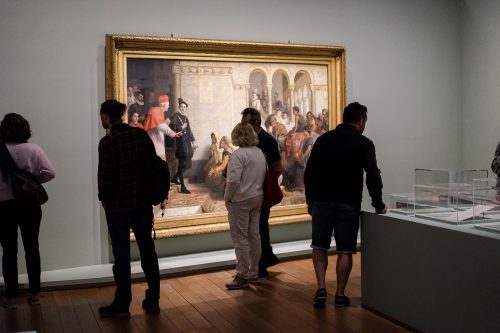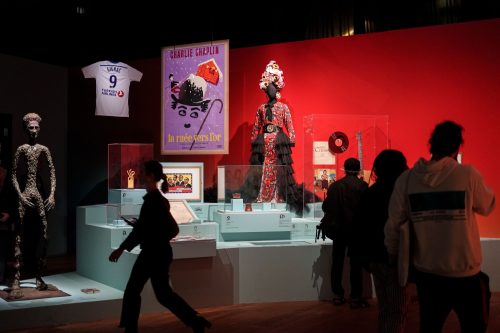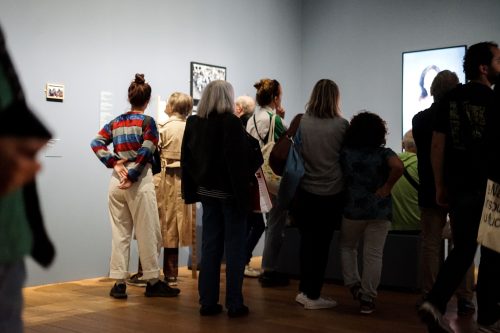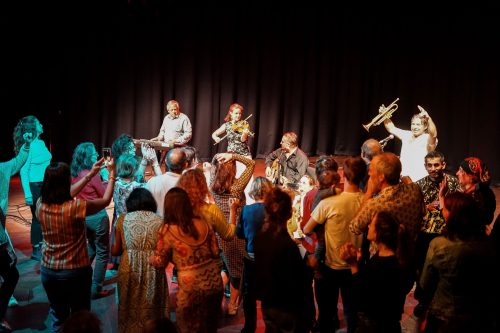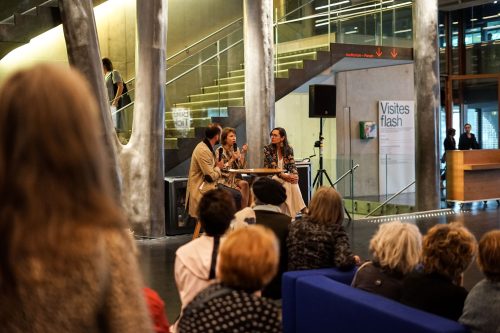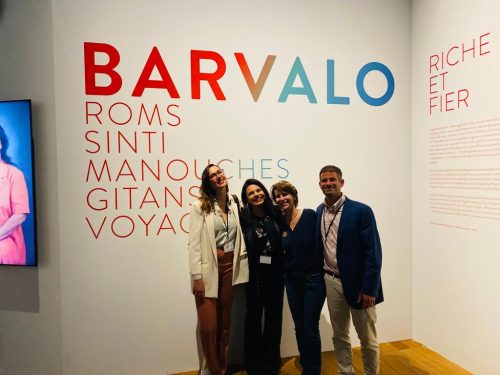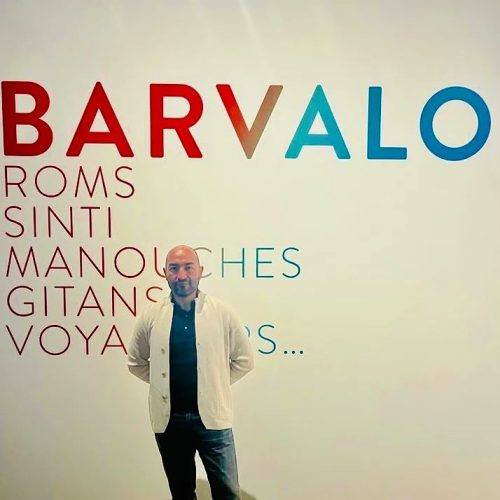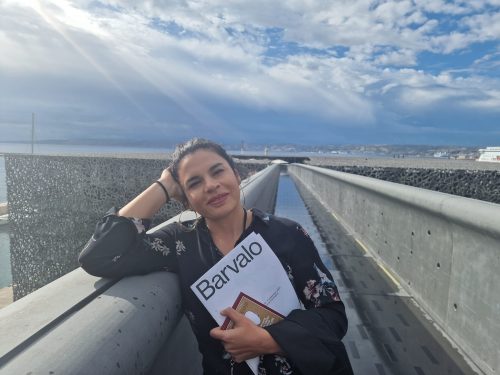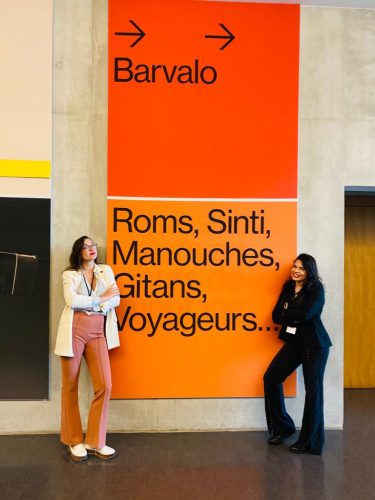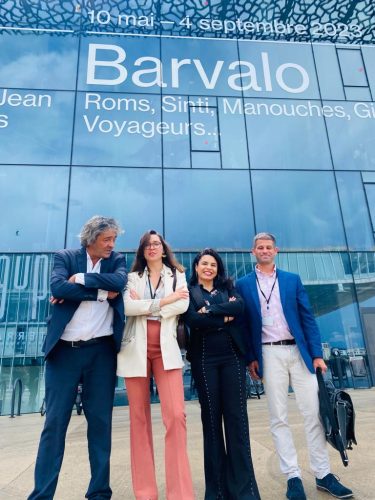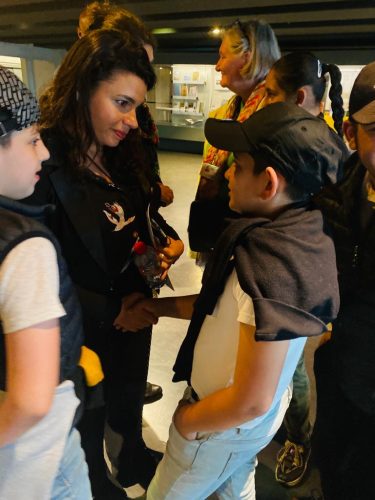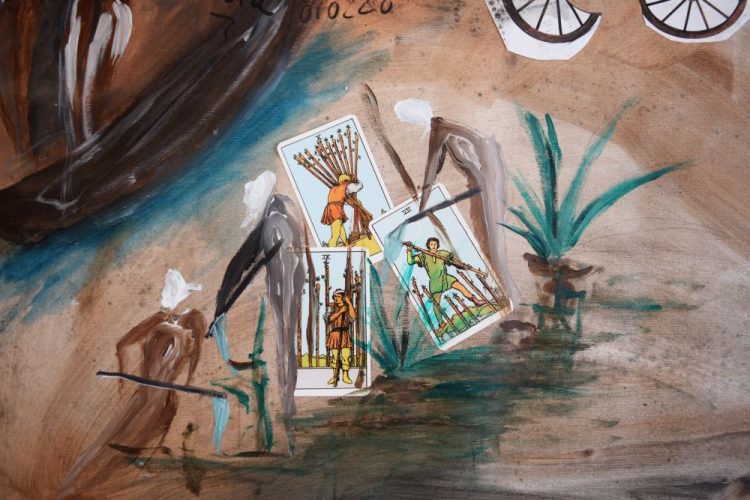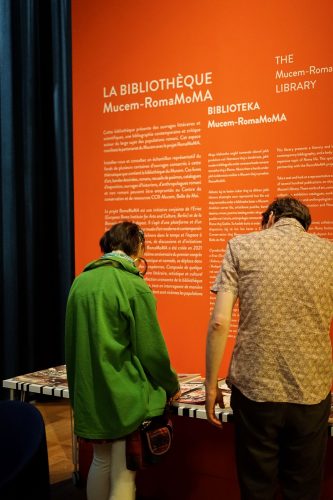BARVALO: an exhibition where Roma are shaping the narrative
Barvalo
Roma, Sinti, Manoushes, Gitanos, Travellers…
Exhibition at the Mucem (Museum of Civilizations of Europe and the Mediterranean) in Marseille from May 10 to September 4, 2023
Developed in partnership with and co-curated by ERIAC
“The Elephant In The Room” as an expression, refers to something controversial, something that is not meant to be there, does not belong there, yet causes some disturbance, some sort of a change in the given context and in the space/environment. It is also the title of an artwork by British-Romani artist Delaine Le Bas, part of Mucem’s permanent collection and currently on display within the <<Barvalo>> exhibition at the Museum of Civilizations of Europe and the Mediterranean (Mucem) in Marseille.
Delaine Le Bas, ‘Gypsy’ The Elephant In The Room, 2018, plastic and textiles, 70.05 × 6.40 © Michèle Clavel
This allegory can be applied to <<Barvalo>>, which opened on May 9th at the Mucem, a collaborative, participative project, and the first exhibition of such nature which brought together a group of nineteen experts of Romani and non-Romani origin, to present the richness and diversity of cultural, historical, artistic contributions of the Romani populations to European societies.
As an “Elephant In The Room”, <<Barvalo>> has changed something, in a very positive way. It managed to change the regular practices of established museums and shape the narrative from the perspective of self-representation. As Anna Mirga-Kruszelnicka, deputy director of the European Roma Institute for Arts and Culture and co-curator of <<Barvalo>> exhibition put it, “For once, in this way, we could shape the narrative about us”.
The initial steps on the path leading to the opening day of <<Barvalo>> were already taken around 2014 when one of the curators of the exhibition Jonah Steinberg, from the University of Vermont first contacted the museum with his research interest in the “intellectual and epistemological exclusion of certain populations, particularly Romani” and its manifestations in museum collections. They toured around Europe with Julia Ferloni, who co-curated the exhibition on behalf of Mucem, and met with leaders of Romani NGOs, activists, and researchers, to form a group of experts around the exhibition, also involving ERIAC. As a relevant innovation to this creative process, the exhibition was constructed with the involvement of nineteen Romani and non-Romani experts, who assured that finally the Romani perspective is represented in the museum space.
The curatorial team composed of Julia Ferloni, Anna Mirga-Kruszelnicka, Jonah Steinberg, and associate curators Françoise Dallemagne, and Alina Maggiore, together with the committee of experts welcomed journalists, representatives of Romani associations, delegations, and the general public throughout the opening day, providing them a guided tour several times during the day. Contemporary artists of Romani origin (Emanuel Barica, Luna De Rosa, Gérard Gartner, Gabi Jimenez, Delaine Le Bas, Valérie Leray, Mitch Miller, Malgorzata Mirga-Tas, Nihad Nino Pušija, Marina Rosselle, Marcin Tas, Kálmán Várady) have been invited to speak about their own artworks and present a cultural narrative of their own.
During the opening ceremony, Zeljko Jovanovic, Chair of the ERIAC board spoke about the importance and significance of Roma participation at major arts and culture events and at established museums, and how such exhibitions can positively influence perceptions about Roma. He reflected on the very presence of Roma populations in the heart and vein of Europe’s history, by referring to the portrait of Ivan Bilashchennko, a Roma from Ukraine, who served as a colonel during World War II. Bilashchennko’s portrait is exhibited within <<Barvalo>>, and is one of the many exemplary and outstanding contributions of Roma individuals to the Europe we know today.
- © Julie Cohen, Mucem
<<Barvalo>> was visited by over 900 visitors during the opening day and continues to receive intense interest both from the French public and media, as well as international visitors.
Like the <<Barvalo>> exhibition, its accompanying catalog, aims to “reverse the views” and fight against stereotypes and antigypsyism, doing it so not only in French, but also in Romani language.
The program series around <<Barvalo>> exhibition continued with the screening of the films “Gipsy Queen” and “Letters of Forgiveness”, followed by a discussion with award-winning actress Alina Şerban, in conversation with ERIAC deputy director, Anna Mirga-Kruszelnicka.
Prior to the opening day, an ERIAC delegation had the pleasure to meet with Rudy Ricciotti, architect of the Mucem, who proudly claims Roma origins. Rudy Ricciotti also visited the exhibition in the building which is the materialization of his creative genius and hard work.
The exhibition <<Barvalo>> is divided into two parts. From the first accounts of the arrival of Romani populations in Europe to the present day, the first section of the exhibition highlights the ways in which persecution of the Romani population, culminating in the Romani Holocaust/Poraijmos/Samudaripen, arose and continues. This first part also deals with the role of stereotypical representations in culture and folklore. At the same time, it shows how Romani groups expressed themselves, especially through a common language, Romani, and claimed their rights in these oppressive situations.
The exhibition also showcases contributions from contemporary Roma artists, who reappropriate their own culture through these artworks and present a narrative of their own. Romani-Italian artist Luna De Rosa’s artwork, the “Structure of Antigypsyism” was a special commission by ERIAC for the Barvalo exhibition, to depict the many hidden layers of negative preconceptions, hate, and perpetuating historical “othering”. Her collage represents Antigypsyism’s complex and multifaceted character, which manifests itself in the pejorative stereotypes projected onto European Roma communities.
- Luna de Rosa, The Structure of Antigypsyism, detail 2021, mixed technique, collage
The second part of the exhibition offers a reflection on the notions of belonging and identity, by reversing the visitor’s gaze. This is the installation by the artist Gabi Jimenez, the Gadjo Museum: here we discover “gadjology”, an imaginary and parodic science of the Other that echoes a Romani perception. This space takes the form of a diorama devoted to “gadjo culture”, thus revealing the absurdity of the essentialisation of the Other when it is pushed to its extreme. It also questions the role of the ethnographic museum as a disseminator of “truth”.
- © Julie Cohen
At the end of the exhibition, a reading room offers visitors a selection of books on the broad subject of Romani populations and the cultural history of Roma. This space demonstrates the close collaboration of the Mucem with ERIAC’s RomaMoMa Nomadic Library project.
<<Barvalo>> is on view until September 4, 2023.
Collaborating artists:
Emanuel Barica, Luna De Rosa, Gérard Gartner, Gabi Jimenez, Delaine Le Bas, Valérie Leray, Mitch Miller, Malgorzata Mirga-Tas, Tamara Moyzes, Nihad Nino Pušija, Marina Rosselle, Marcin Tas, Kálmán Várady
Curatorial team:
Co-curators:
Julia Ferloni, curator, head of the “Crafts, Trade and Industry” unit, Mucem
Anna Mirga-Kruszelnicka, associate director of Eriac – European Roma Institute for Arts and Culture (Berlin)
Jonah Steinberg, associate professor and chair of the Global Studies Department at the University of Vermont, USA
Associate curators:
Françoise Dallemagne, collections and research officer, Mucem
Alina Maggiore, PhD student in social anthropology, Mucem / University of Aix-Marseille / University of Freiburg, Germany
Expert committee:
William Acker, lawyer, general delegate of the National Association of Traveller Citizens (ANGVC)
Yahya Al-Abdullah, PhD student in social anthropology, EHESS Paris
Nelly Debart, fairground worker, president of ANGVC and member of the Travellers’ Advisory Council
Bénédicte Florin, lecturer in geography, Arab and Mediterranean World Team (EMAM), CITERES laboratory, University of Tours
Lise Foisneau, anthropologist, research fellow at the CNRS
Pascal Garret, photographer and sociologist, Tours
Caroline Godard, project manager of the NGO Rencontres Tsiganes, Marseille
Gabi Jimenez, visual artist and president of ADVOG
Timea Junghaus, art historian, director of Eriac, Berlin
Jean-Pierre Liégeois, sociologist, honorary teacher-researcher and director (1979-2003) of the Roma Research Centre at the University of Paris-Descartes, consultant to the Council of Europe
Valentin Merlin, freelance photographer
Cristian Padure, linguist, teacher-researcher at the University of Bucharest
Santino Spinelli, musician, composer and professor at the University of Chieti
Sasha Zanko, tinsmith, president of the NGO Tchatchipen and delegate of the European Roma and Travellers Forum
Scenography: bGc studio, Iva Berthon Gajšak, Giovanna Comana, Clara Launay
Graphic design: Fabrice Petithuguenin




